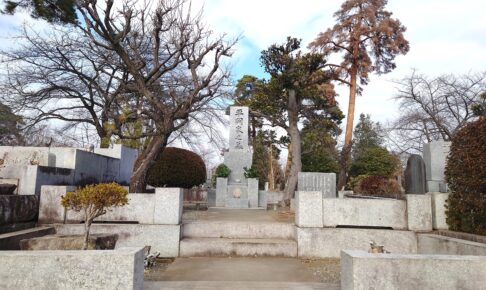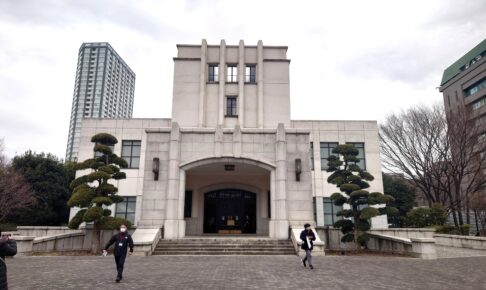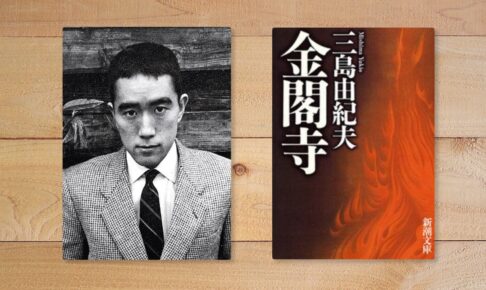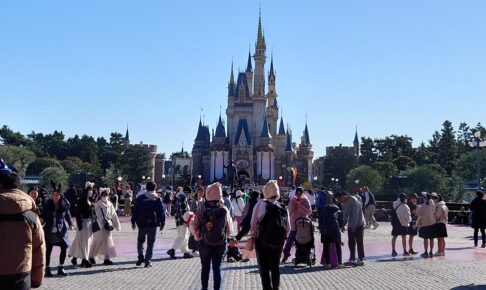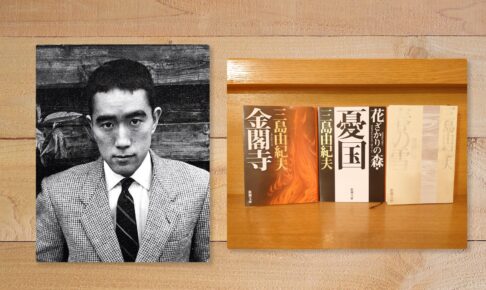Table of Contents
(34) Basilica of San Carlo alle Quattro Fontane - The architectural masterpiece of Borromini, Bernini's rival!
Previous Article(33) Basilica Sant'Andrea al Quirinale - Bernini's Pantheon, an architectural masterpiece!In the previous section, I introduced Bernini's architectural masterpiece, the Basilica of Sant'Andrea al Quirinale, but in fact, about 150 meters away from the Basilica stands the architectural masterpiece of Bernini's rival, Borromini.
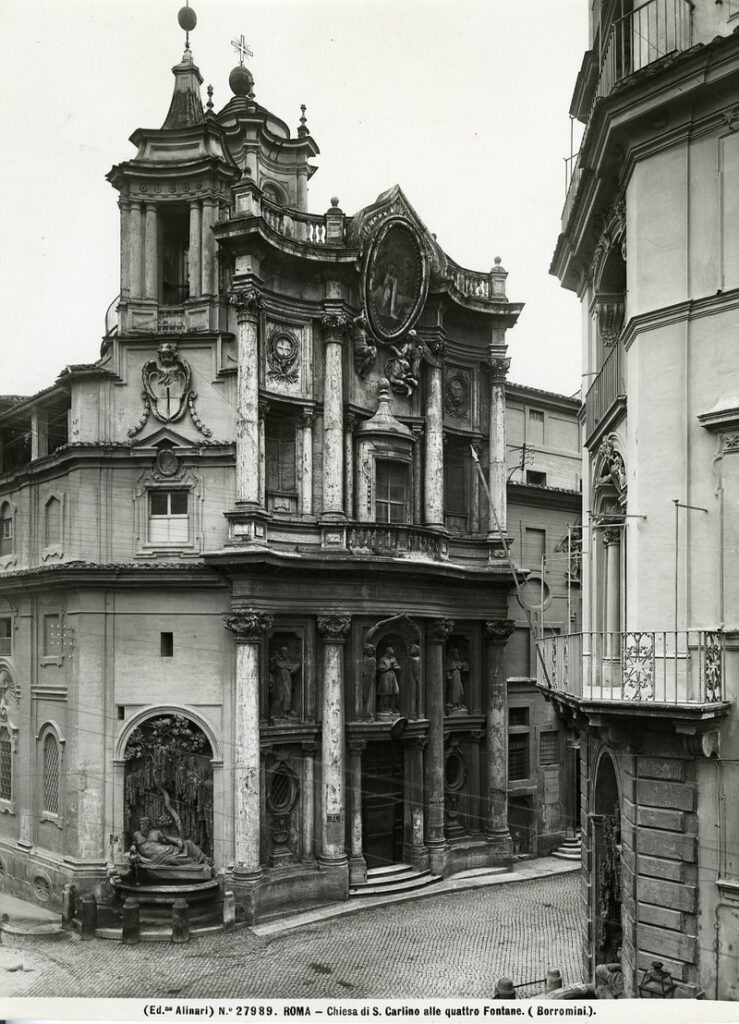
I also visited this cathedral as a set with Bernini's Sant'Andrea al Quirinale.

For more information about Borromini(26) Bernini's Failure and Downfall: The Death of Patron Urbanus VIII and the Rise of the Prodigy Borromini."As I briefly mentioned in the article "The Man Who Wouldn't Leave the Building," he was the polar opposite of Bernini in personality and style, and was the subject of a heated battle when Bernini was ousted from office. However, his talent was undeniably outstanding, and he was an architect full of originality and genius. It is nothing short of a miracle that Borromini's masterpiece and Bernini's masterpiece are standing almost next to each other.
Let's take a look at the description of the masterpiece, the Basilica of San Carlo alle Quattro Fontane.
Borromini's masterpiece, the Basilica of San Carlo alle Quattro Fontane (Basilica of San Carrino)
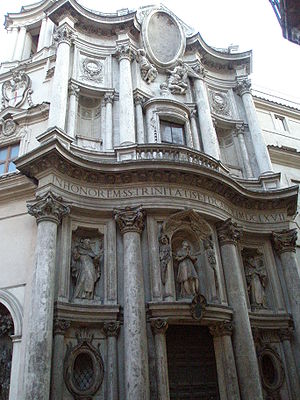
The first thing that strikes you when you see this facade is that it is neither architecture nor sculpture, but rather a curious fusion of the two. As one gazes intently at the work, one is struck by the dynamic movement, which could be described as an undulation, created by the resonance between the curving curves and the unmistakable sense of rhythm in the detailing. The work as a whole is suffocatingly dense.
It is often pointed out that Borromini broke with the classical architectural tradition inherited from antiquity to the Renaissance, and rather based his work on the medieval masonry tradition. This is mainly true of the plan, as I will discuss later, but there is another aspect of Borromini's architecture that I feel is medieval in nature. But there is another aspect of Borromini's architecture that I find medieval: the ornamentation of the architecture. For example, not only the strangely interwoven leafy column capitals, but also the crowned palms surrounding the windows, the motifs of angels on the sides of the wall-favors, and the light and palms decorating the wall-favors. This kind of architecture and sculpture is reminiscent of medieval art. The fantasy of the building is at the same time reminiscent of Art Nouveau. At any rate, these architectural details that make the viewer fall in ecstasy are certainly one of Borromini's greatest attractions.
Masumi Ishinabe, Yoshikawa KobunkanAs Long as St. Peter's Stands: My Guide to Rome.p265-266
Masumi Ishinabe continues with the following description of the interior of this cathedral.
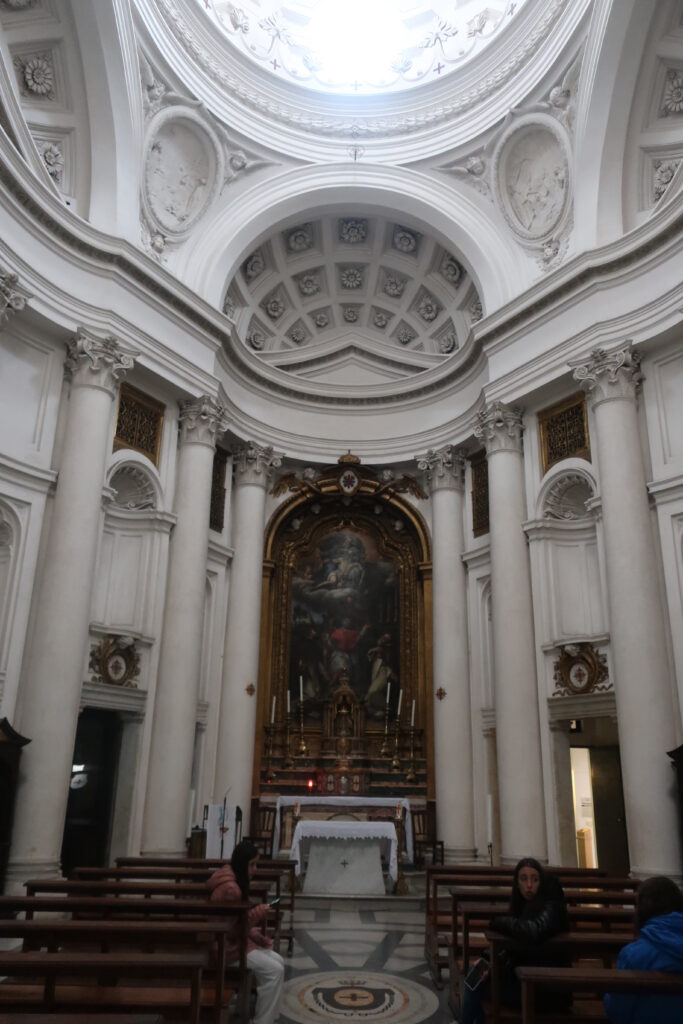
Now that we have admired the facade, let's go inside. There is nothing more exciting than opening the door of a baroque cathedral. It is because an unexpected space opens up in front of you. This is exactly the case with the Basilica of San Carrino, and the surprise upon entering for the first time is truly astonishing. The narrow space in front of us seems at first so absurdly curved that it is unsettling. The four half-domes, which converge sharply after a trompe l'oeil maneuver, stir this uneasiness. But it is when I look up at the dome of the ceiling that my uneasiness turns into a definite surprise.
Masumi Ishinabe, Yoshikawa KobunkanAs Long as St. Peter's Stands: My Guide to Rome.p266-267
We will look at the dome portion again later, so please keep this commentary in mind.
The commentary then continues to discuss the relationship between Borromini and Bernini.
Borromini contrasts with Bernini
The reason why Borromini's architecture is said to be rooted in the masonry tradition of his native Lombardy is that his plans are based on a combination of geometric figures, rather than on the ancient tradition of moduli, i.e., the standard scale of column diameters and the like, on which the architectural proportions are determined. The plan is a combination of geometrical figures. This was a very bold and original approach for the time. Bernini, who was innovative in sculpture but more orthodox in architecture, criticized Borromini's architecture, saying that it was based on chimeras (mythical monsters) rather than on human proportion and that "it is less harmful to be a bad Catholic than a good heretic. This is precisely the point he is making when he says, "It is less harmful to be a bad Catholic than a good heretic.
However, this is not to say that Borromini's originality was not understood; his originality was appreciated even at the time. This is confirmed by the testimony of a priest of the Congregation of the Holy Trinity, who said that when the Basilica of San Carrino was completed, many architects came to study it. In fact, the experiments conducted by Borromini in this cathedral were later transferred to Piedmont, Germany, and other parts of Europe, where they were carried on in various forms. It is not unlike the influence of Caravaggio, who also came from Lombardy. The influence of Caravaggio was not dissimilar to that of Caravaggio, who also came from Lombardy, since both had a rather limited influence in Rome.
The Trinitarian Father also praised Borromini for creating great architecture without spending too much money. It is no exaggeration to say that he and Bernini were opposites in every respect, even in terms of expenses, and Bernini's buildings were accused of costing too much money. He used colored marble in abundance and explored a variety of colors and issues in sculpture and architecture. Borromini, on the other hand, was only concerned with stucco, as is the case with the Basilica of San Carrino, and in a world of black and white, he sought only the beauty of the shadows created by the stucco ornamentation and the wonder of spatial composition. This becomes even clearer when we look at the Basilica of San Tivo. It is no wonder that the Society of the Holy Trinity, which did not have a strong patron, highly valued Borromini's economy.
Masumi Ishinabe, Yoshikawa KobunkanAs Long as St. Peter's Stands: My Guide to Rome.P268-270
Bernini and Borromini are polar opposites.
It is a miracle that these two architects were born at the same time and built their architectural masterpieces almost next to each other.
Another thing to note is the contrast between Bernini, who had a patron in the form of the Pope and could use his almost inexhaustible financial resources to explore art, and Borromini, a dour and solitary craftsman, who could build without money.
Neither is good and neither is bad, but these differences are very interesting.
Visit the Basilica of San Carlo alle Quattro Fontane
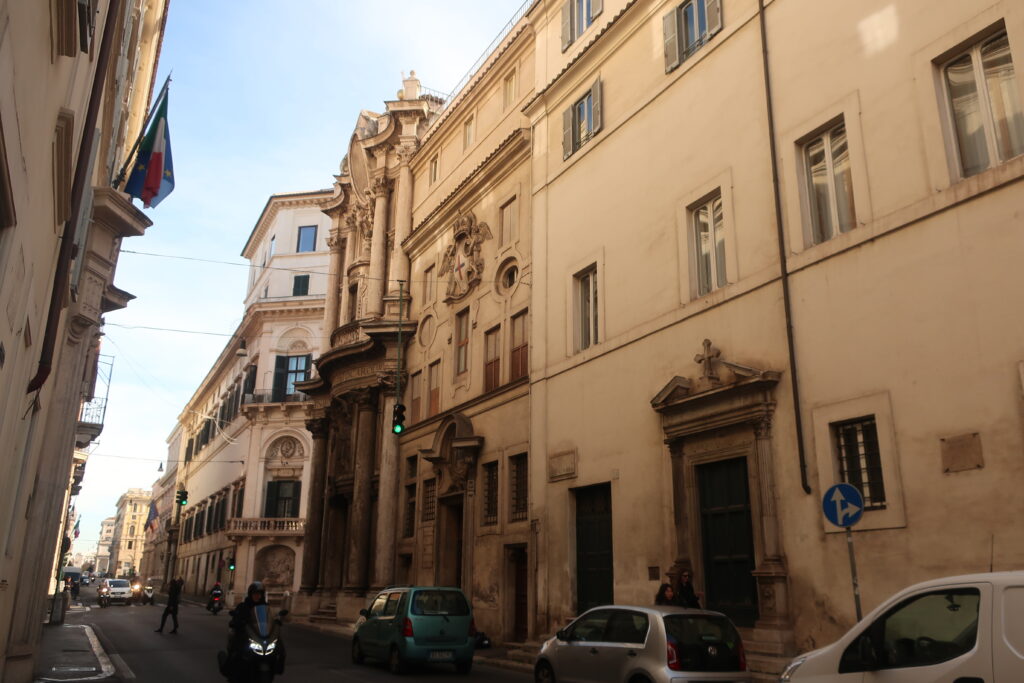
Walking straight on from Bernini's Basilica Sant'Andrea al Quirinale, about 150 meters away, you will see Borromini's Basilica San Carlo alle Quattro Fontane.
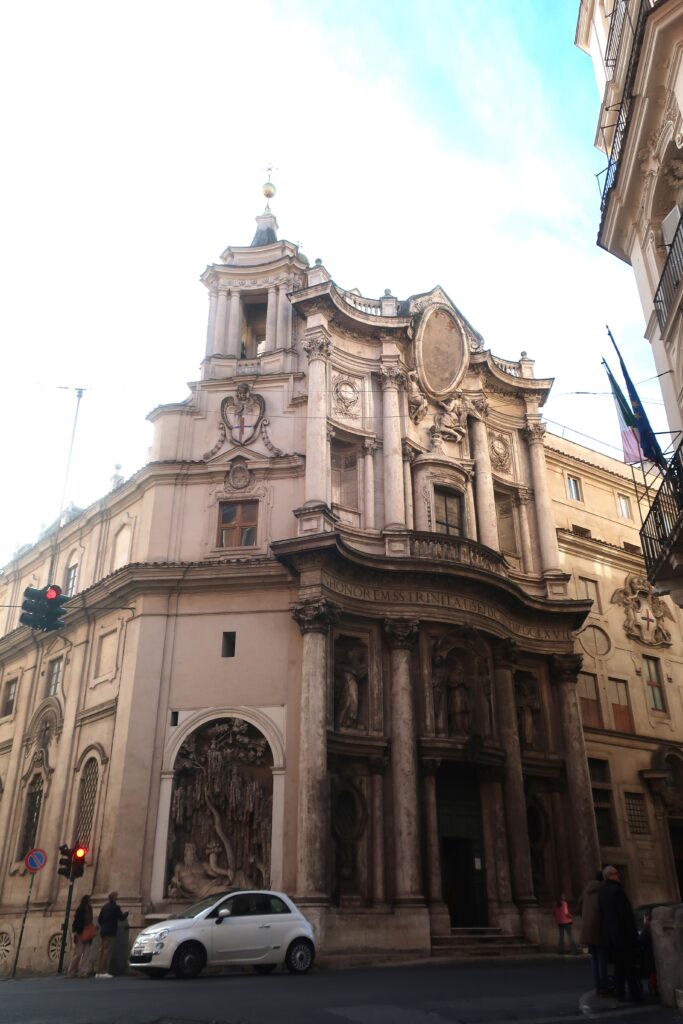
Please note that the street in front of the cathedral is quite busy.
The eye is drawn to the wavy construction of the facade.
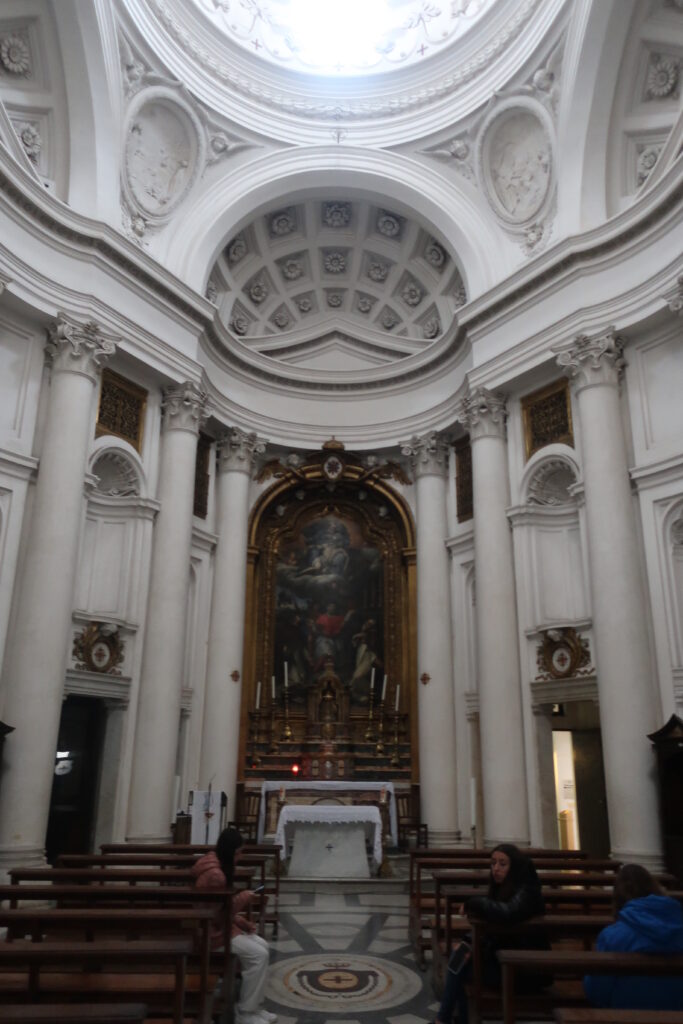
I was also astonished the moment I entered this cathedral. I was shocked by the splendor of Bernini's Sant'Andrea al Quirinale when I entered it, but this church is no less impressive. It is a wonderful church.
This cathedral is built in black and white, but Borromini also renovated the Laterano Cathedral, which was also decorated in black and white. (See the photo below.)(9) Basilica di San Giovanni in Laterano - Visit the huge church that was once the political center of Christian Rome.(See article in)
Bernini specializes in colorful interiors with marble of various colors.
In contrast, Borromini focuses on black and white and geometric patterns to create an artistic space that overwhelms the viewer.
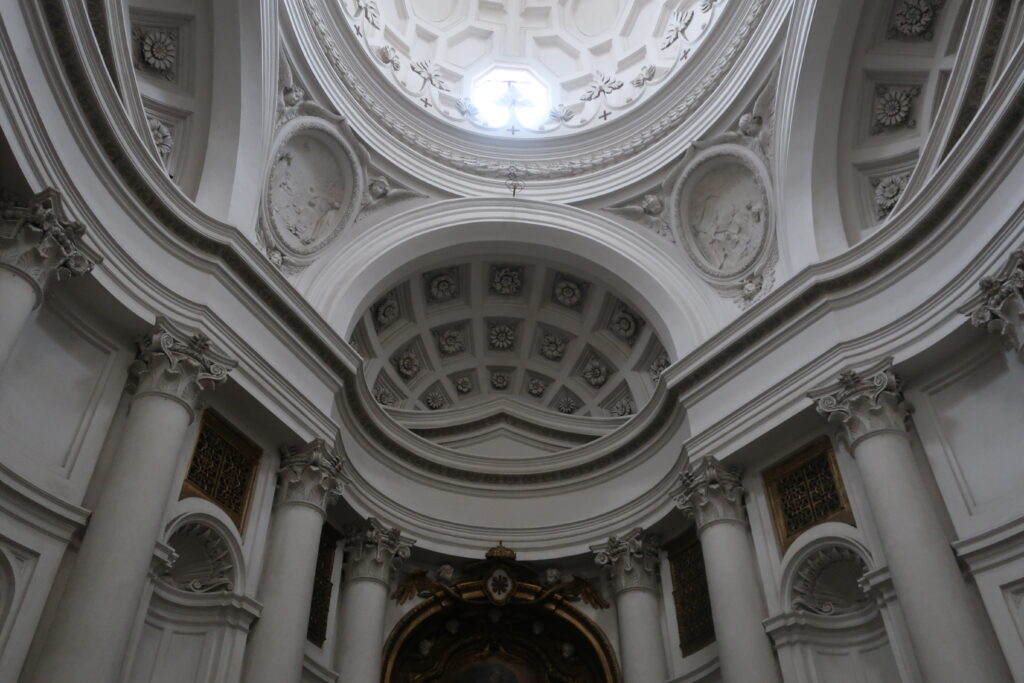
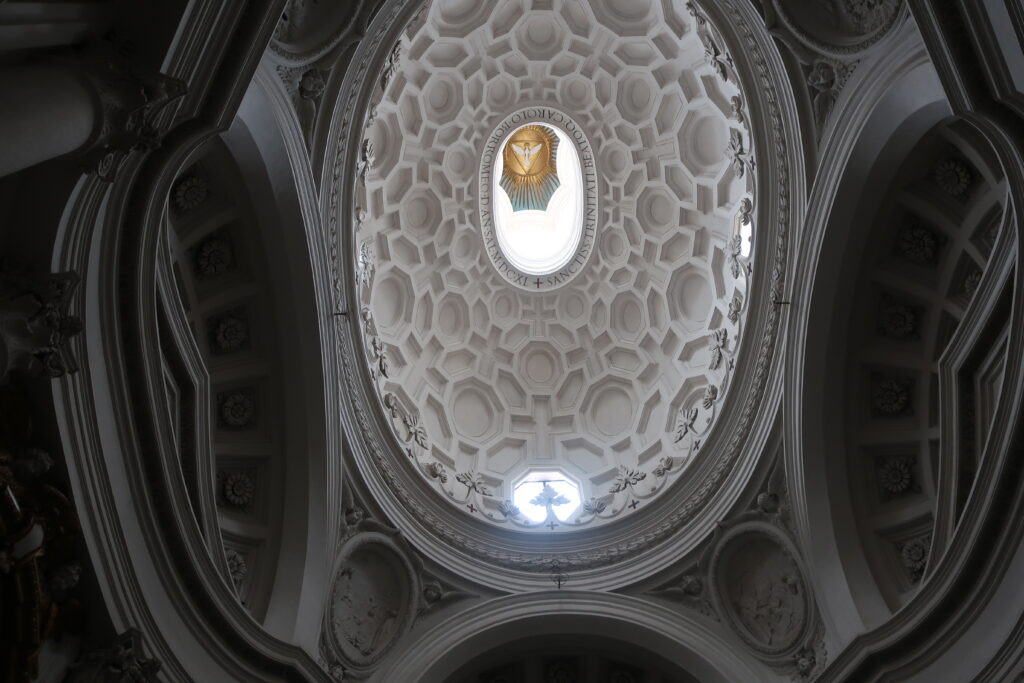
This is the dome ceiling section.
Earlier in this commentary.The elliptical dome, which seems to float in spite of its continuous wall, is decorated all over with stucco decorations featuring crosses, and its shadows leave the viewer spellbound. It is a spatial fantasy unlike anything I have ever seen."This is precisely the part that was stated.
I too was speechless at the decoration of this dome section. Look at these unpredictable curves! The interplay of curves and straight lines expressed in sharp black and white colors overwhelmed me.
And the beauty of the decorations scattered throughout it...!
Frankly speaking, in terms of impact, it surpasses Bernini's Sant'Andrea al Quirinale. I don't know what it is, but I feel as if I am being hit with a tremendous punch and killed with a single blow. That is this cathedral.
Masumi Ishinabe also describes this cathedral as follows.
However, with the rise of neoclassicism in the modern era, Borromini's architecture, along with Baroque art in general, came to be dismissed as a "plague of taste" (Milizia). Charles Dickens, for example, said of Borromini's and Bellini's work, "I am convinced that in the whole wide world they are the most abominable sort of work. Today, however, Borromini's works have won the sympathy of many people. In fact, his originality is truly astonishing in our eyes. Nevertheless, there are probably many visitors to the Basilica of San Carlo alle Quattro Fontane who, while they may find it unique and wonderful, may find it too strong for their liking. But be warned. But be warned, there are many who have already been "bitten" by the Borromini, even if they think so.
Masumi Ishinabe, Yoshikawa KobunkanAs Long as St. Peter's Stands: My Guide to Rome.P271-272
Dickens was a great English writer active in the mid-19th century. Although this writer was also an admirer of Dostoevsky, he seems to have had harsh opinions about Bernini and Borromini. We feel here that what is considered beautiful differs from period to period.
I, however, was one of those who were completely "bitten" by Borromini. I was so enamored with this cathedral that I went back many times.
If you ask me to choose between Bernini's Sant'Andrea al Quirinale and Borromini's Sant'Andrea alle Quattro Fontane, I honestly cannot. Both are too overwhelming.
As they are said to be polar opposites to begin with, these two architectural genres are too different to be compared. In this case, it is a matter of "taste. But even so, I cannot say which one I like better. I cannot choose. I like both too much. Both cathedrals are the highlights of Rome. I suggest you to enjoy the competition of the great geniuses of Rome. Both are easily accessible from Termini station. You can also take the metro to the nearby station. I highly recommend a visit.
be unbroken
*The following photos are my Bernini notes. I hope you will find them useful.
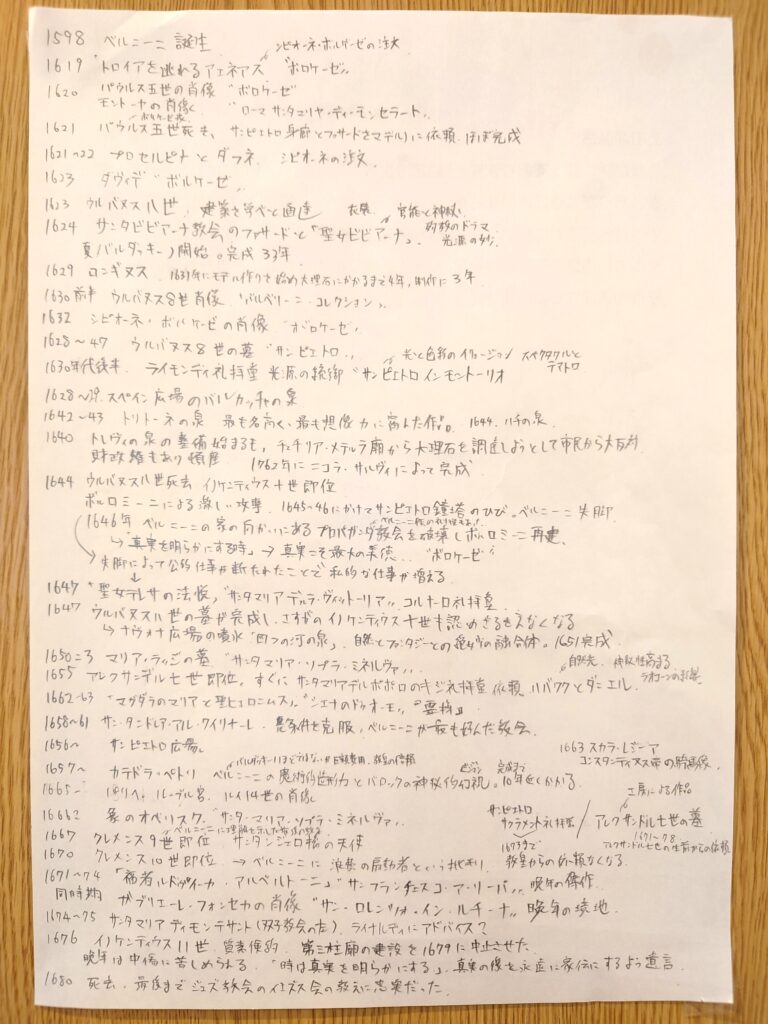
*The list of articles in the "Rome Travel Journal" can be found atCategory page hereindicates direction or goal (e.g. "to")
*Please visit this category page for recommended books to learn about Rome and Italy.
The Rise and Fall of the Roman Empire, the Vatican, and Roman Catholicism."
The Italian Renaissance and the Revolution in Knowledge."
Next Article.
Click here to read the previous article.
Related Articles





















